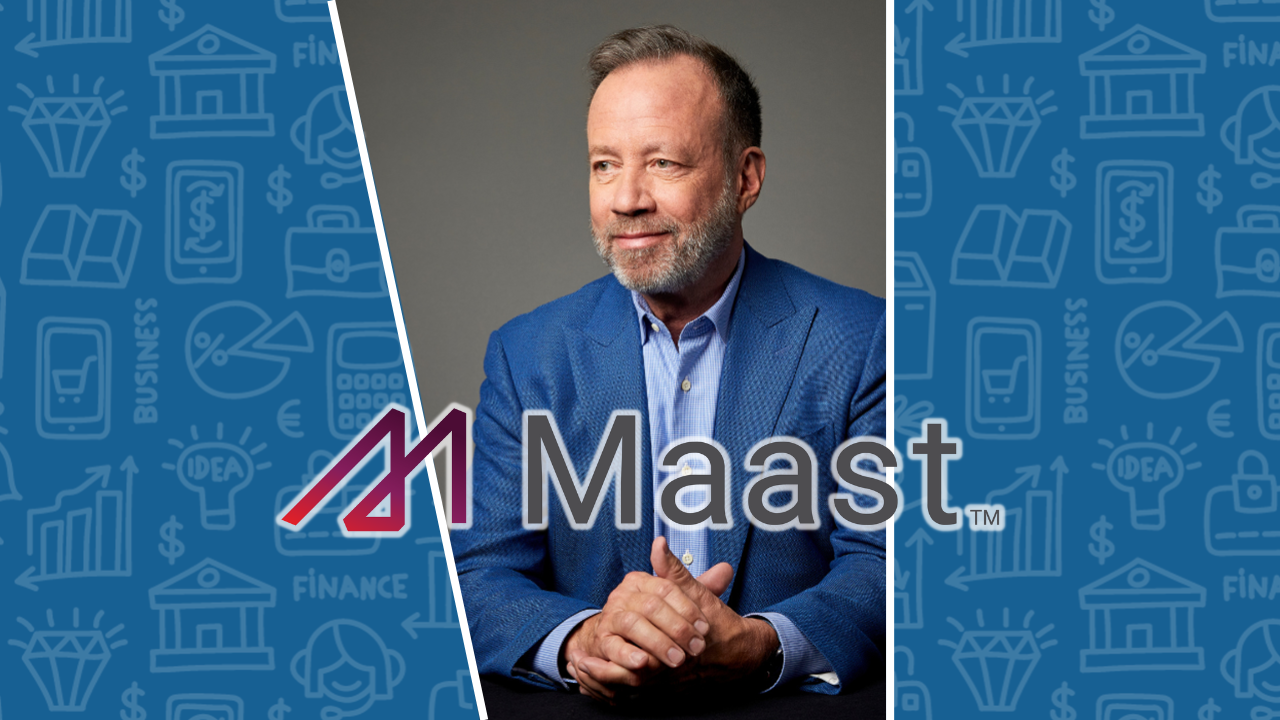
Community banking’s push into technology was already happening before the pandemic, but it has become an even bigger priority ever since. Nevertheless, pivoting to a tech-forward business model is not for the faint of heart. Without the proper leadership, board support, and expertise, navigating the fintech terrain, which is riddled with landmines, could be deadly. On the other hand, done right, adopting a tech-forward strategy could propel the community banking industry to its fastest growth in history.
Travillian had the opportunity to speak with a trio of bank executives, each at different stages of their tech-forward journey. In a nod to their innovation accomplishments, Communities First Financial Corporation and Central Payments are also members of the Travillian NEXT Tech Forward Bank Index. And spoiler alert, it’s very likely First Fed Bank will also join this select group in the near future.
Hosts Brian Love, Travillian’s Head of Banking & Fintech, and Joe Fenech, Chief Investment Officer at GenOpp Capital Management, led a stimulating discussion with First Fed President and CEO Matt Deines, Communities First Financial Corporation President and CEO Steven Miller, and Central Payments President and Founder Trent Sorbe on the evolution of becoming a tech-forward bank and what it means for the bottom line.
Community Bank DNA
Joe pointed out that there tends to be something in the DNA of many tech-forward banks, especially those with longer operating histories, that made the business-model pivot a bit easier — even if technology was not a focus for very long. All three banks credited their success in becoming tech-forward banks to either the open-mindedness or self-awareness of their boards. At Washington state-based First Fed Bank, it didn’t hurt that Matt was candid with his board about his fintech ambitions from the beginning.
“So, they had implicitly or explicitly bought into what I said I was going to do. And as I continued to do these things and bring these things forward, I tried to refer back to those conversations as to what our plans and intentions were.”
As a nearly 100-year-old financial institution, First Fed Bank has a long history as a savings and loan before converting to a commercial bank charter a couple of years ago. When Matt assumed the leadership reins at First Fed in August 2019, he brought his digital ideas and thoughts with him.
“We really think that we can continue to operate as a leading community bank in the state of Washington…as well as being very tech-forward. And there are opportunities for both the fintech activities to lean on the bank and also for the bank to learn and benefit from some of the fintech activities,” Matt noted.
Over in Sioux Falls, South Dakota, Central Payments is the payments subsidiary of privately-owned Central Bank of Kansas City, a family-owned bank. The shift to fintech came on the heels of a reality check. Trent explained how board members came to the realization that they would not be able to compete on product or branch. Instead, they needed to shift their focus to where their competitive advantage most likely was — infrastructure — paving the way for Trent when he joined the bank close to a decade ago.
“They basically came to the hard realization that they’re underleveraging their platform…They recognized they had an overdependence on their core. And they recognized that the only way they were going to stay in Northeast Kansas City — a very, very economically distressed neighborhood — and serve that community was to find new revenue streams.”
Unlike First Fed and Central Payments, whose histories go back many decades, Communities First Financial Corporation is less than 20 years old. Today Fresno First Bank (a subsidiary of Communities First Financial Corp) has customers in more than three-dozen states, thanks to its payments business. Steve finds himself recruiting talent plus potential partners from across the nation, saying Fresno First would never be in the position it is in today were it not for the open-mindedness of its board.
Fresno First, which is structured as an ESOP, was one of the last banks to get a charter before the financial crisis. As a result, it remained stuck as a de novo bank for longer than usual. While Fresno First is one of only about five dozen banks to boast both a bank charter and an acquiring license, its experience with fintech is not too much different than First Fed or Central Payments.
“Like the other banks, there was a bit of a mind shift. At the end of the day, we’re still a community bank…and so there are things you just have to do and there’s a mindset there. But we were able to bring everyone along. And I think today, between all of that and also with COVID, we kind of look at the country as our canvas now,” said Fresno First’s Steve.
Cultural Crossroads
When it comes to company culture, tech-forward banks must work harder at striking that balance between the legacy institution and the fintech business. And Central Payments’ Trent didn’t sugarcoat it.
“I’d love to tell you that that was easy. It’s not,” he said.
At Central Payments, all three of the bank’s business lines — commercial banking, CDFI, and their payments business — depend on one another for the overall success of the organization, which has made all the difference.
“We elevate all of those equally within the organization and recognize everybody is dependent on the performance of all three,” said Trent.
Ultimately the cultures of these two entities converged even though the community bank and the payments business are housed in two separate cities — Kansas City and Sioux Falls, respectively.
Fresno First’s Steve agrees with Trent that achieving the right culture between the bank and payments is hard work, which is why many people don’t do it. However, the other extreme is failing to address it all together, which leaves you with different silos that don’t talk to one another. He says,
“The bigger you get as a bank…you can’t avoid having expertise in some silos. You can’t expect everyone in the bank to be a fintech junkie. But you have to give a base knowledge to everyone, so they’re on the same page as to why we’re doing certain things and give them the opportunity to learn and to dig in if they want to.”
Matt agrees, saying banks need to have experts and specialists in place because of the difficulty involved in understanding technology. The trick at his bank is making people feel like they are part of one First Fed family.
“The traditional bankers that we have at the company want to know, ‘What about us? Do you still care about us?’ We do. We need them desperately. We care about them desperately…It’s just a matter of keeping that emphasis and that alignment…staying focused and understanding that at our core, we’re a community bank. It’s just the definition of our community is likely going to change,” said Matt.
The Bottom Line
Travillian’s Brian Love asked the bankers about how to separate banks that are meaningful players in BaaS and fintech vs. the rest of the pack. First Fed’s Matt pointed out that Trent and Steve are at high-performing banks, with 2% ROAs and really strong profits, saying of his peers:
“They’ve leveraged into these new strategies and technologies to really be profitable. You see other banks across the country who are participating in this space, and they are seeing outsized returns and performance. And ultimately, the reason for that is this is a relatively capital light business strategy.”
Matt goes onto explain that traditional banking strategies hinge on leverage, capital constraints, liquidity, and concentrations. Meanwhile, in the fintech and payments world, those constraints don’t exist. However, there are other constraints around operations and regulation, for example. Ultimately, he says the opportunity in fintech is outsized, but it’s not easy.
“I do think there’s a moat for some of the banks that have gotten to the other side,” said Matt, adding that it will take some committed boards and entrepreneurial leaders to embark on this journey.
Joe noted that Steve operates one of the most profitable publicly traded banks of any size in the country, despite having just one physical branch location, pointing to diversified revenue streams. Steve is quick to add that the payments piece is just the “icing on the cake in terms of income,” equating the bank to the island of Singapore for succeeding because they had to. At the end of the day, Steve is looking for one thing — deposits.
“Even with payments, we’re in the payments business because I want deposits. That’s really the focus of the bank. I don’t want to be a one-trick pony and be 100 percent one thing.”
Building Vs. Buying
When it comes to fintech, banks have a decision to make — build it or buy it. First Fed’s Matt says his bank’s approach has been a little bit of both. The bank has invested through venture funds as well as directly via fintech partners.
“In a way, we’re buying those companies. We’re not buying the whole thing, but we’re buying into those companies,” Matt said, adding that by and large it’s a building proposition.
First Fed has begun to have conversations around good tech stacks or tech teams out there that are now either wounded or trading at a considerable discount to where they were six months ago. The bank could partner, acquire, or do a lift out of the tech teams.
“It’s going to come back to the banks that have the charters, expertise, and capabilities to take advantage of what’s going on,” Matt noted.
Central Payments has been building in earnest for nearly a decade. Trent explains that while Steve is intent on getting closer to the merchant, his bank is focused on getting closer to cardholders. He recalled how in 2018 when he went to the boss and said, ‘let’s build this thing,’ which would take millions and millions of dollars.
“He and I would arm wrestle philosophically around how to do this,” Trent said. “We knew we were not going to build it entirely in house, but we certainly were not going to buy it.”
It dawned on them that maybe it would be a rent-to-own situation where they would find some folks and see how the market reacted rather than building something from scratch with their own team. Once the rent-to-own-model served its purpose, it became time for the bank to take ownership of it, which they spent 2018-2020 doing.
“After that, we had comfort investing in it and making it scalable. It’s a natural course for smaller community banks to go, a walk before you run approach.”
Talent Wars
As competition among tech-forward community banks heats up, there is a war brewing on talent. Each of our panelists handles this in their own unique way.
Fresno First’s Steve has found success hiring talent out of startups. Meanwhile, Central Payments’ Trent explained how the bank recognized from the get-go that they needed to build out a team that had a specialization in fintech, which is why they chose Sioux Falls for the payments arm.
“Most people say Sioux Falls is not a mecca for many things other than hunting, fishing, and the card business. I think we quickly realized it’s a small community. A lot of us knew everyone in that community…We were very lucky. The talent level is very high for the type of business that we’re in. We’ve grown the bank into the 17th largest prepaid card issuer in the country. We sit right between Wells Fargo and PNC.”
At First Fed Bank, Matt described the price a bank pays for good talent.
“We had relatively good success in finding the people we want and need. It is still tough and costly. The market for someone with that kind of tech background, the expectation for salary is much higher. So that does make it challenging,” said Matt.
Still, he pinches himself now that the bank has three employees living in New York.
“As we open our horizons, it’s really cool to think about what we can do, how we can reach out to the world without abandoning our existing markets,” he said.
Tech forward banks are getting started in many ways, and our three experts will continue down this road for the foreseeable future. Matt says they could reach a point where they must choose one path or another. But not today.
“I think we’re a long way away from that,” he added. “Hopefully, we never have to go down a path where we have to choose.”
Travillian’s Banking and FinTech Practice provides Search and Talent Advisory services to depository institutions across the country. Established in 1998, the firm has built a unique platform that touches every corner of the industry. To learn more, click here, or get in touch below!
|
Brian Love, Head of Banking & Fintech
(484) 680-6950 | blove@travilliangroup.com |












